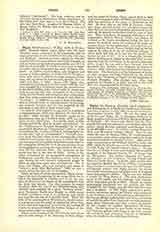

Digby, SIR EVERARD, b. May 16, 1578; d. January 30, 1606. Everard Digby, whose father bore the same Christian name, succeeded in his fourteenth year to large properties in the Counties of Lincoln, Leicester, and Rutland. Arrived at man’s estate, he was distinguished for his great stature and bodily strength, as well as for his accomplished horsemanship and skill in field sports generally, to which he was much devoted. For some time he frequented the court of Queen Elizabeth. In 1596 he married Mary, only daughter and heiress of William Mulsho of Goathurst, Buckinghamshire, with whom he obtained a large accession of fortune, and by whom he had two sons, Kenelm, born in 1603, and John, in 1605. About 1599 Digby, who, although his parents seem to have been Catholics, had been brought up a Protestant, made the acquaintance of the Jesuit Father, John Gerard, with the result that both he and his wife were converted to the Catholic Faith, and he formed with Gerard so close a friendship that they were accustomed to speak of each other as “brothers”. In 1603 he was one of those who assembled at Belvoir Castle to welcome James I on his progress towards London, and he was knighted by the new king on the 23rd of April in that year.
In spite of what might have appeared so auspicious a commencement, there soon followed the fatal Powder Plot, which brought Sir Everard’s career to an ignominious close by a traitor’s death, while yet only in his twenty-eighth year. It is for his share in this, almost exclusively, that he is now remembered. In the “Dictionary of National Biography” he is compendiously described as “Conspirator”, and one of his descendants has recently published his biography under the title “Life of a Conspirator”. In truth, however, of all who had a share in the criminal folly of that deplorable enterprise, there is none to whom the title can less properly be applied, for he had no part either in the conception of the plot, or in the preparation for its accomplishment, and was not even aware of its existence till the eleventh hour. His initiation in the secret was due to the lack of funds. Owing to the delay occasioned by an unexpected prorogation of Parliament, Catesby, the ringleader of the whole design, finding his own treasury exhausted, sought to enlist as associates some men of substance. One of these was Digby, who was inducted and sworn in “about a week after Michaelmas”, 1605, or just a month before the fatal 5th of November.
When the time of action approached, Digby was as-signed the part of preparing for the rising which was to follow the explosion in London, and to put the conduct of affairs into the hands of the conspirators once the blow was struck. For this purpose he rented Coughton Hall, the seat of the Throckmortons, near Alcester, and arranged for a great “hunting match” upon Dunsmoor Heath, near Rugby, to which many Catholic gentlemen were to be gathered, and which was fixed for the 5th of November itself. When the news of the catastrophe at Westminster should arrive, it was hoped that the party so assembled, when they heard what had happened, would form the nucleus of a force by means of which the further designs of the conspirators might be carried out.
When, on the evening of the 5th, Catesby and others arrived with tidings of the discovery of their designand the arrest of Faukes, Digby joined them in their desperate attempt to raise a rebellion, and was captured with the survivors of the party at Holbeche on the 8th. At their trial on the 27th of January, Digby, who alone pleaded guilty, was arraigned separately from the rest, but received the same sentence of death, with all the ghastly barbarities usual in cases of treason. Three days later, January 30, with three of his accomplices, Robert Winter, Grant, and Bates, he suffered in St. Paul’s churchyard, being the first to mount the scaffold, where he confessed his guilt, expressed shame for his infatuation, and solemnly protested that his friend, Father Gerard, had no knowledge of the plot, in or out of confession, adding, “I never durst tell him of it, for fear he would have drawn me out of it”. It is a remarkable circumstance, lending some color to the belief that in later days the king did not believe in the genuine character of the danger he was said to have escaped, that Sir Everard’s son, Kenelm, was knighted by James in October, 1623, when he had not completed his twenty-first year. His description of the behavior of James on that occasion has been borrowed by Sir Walter Scott in the “Fortunes of Nigel”, for the knighting of Richard Moniplies. The younger son, John, was knighted by Charles I, in 1635, and fell in the Civil War as a major-general in the royal army.
JOHN GERARD

